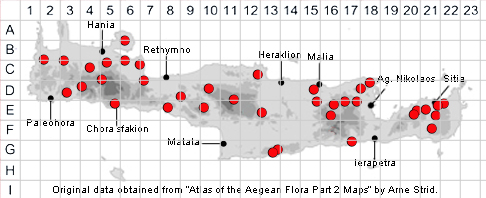
SPECIES DESCRIPTION
LONICERA ETRUSCA
Family and Genus:- See-CAPRIFOLIACEAE/Sect. CAPRIFOLIUM
Common Names:- Etruscan honeysuckle
Homotypic Synonyms:- Caprifolium dimorphum, Caprifolium etruscum,
Lonicera celtiberica.
Meaning:- Lonicera (L) For Adam Lonitzer (1528-86) German physician and
botanist.
Etrusca (L) From Tuscany, the area of the Etruscans.
General description:- Climbing, deciduous sometimes more, or scrambling over
the ground.
Stems:-
1) up to 5m, twining.
Leaves:-
1) 3-8 x 1·5-5 cm, opposite, simple, broadly elliptical or obovate, obtuse or
subacute at the apex, glaucous or whitish-green and usually minutely
puberulent, beneath.
a) upper pair, connate at the base, the next sessile, or short petiolate.
Flower:-
1) From 35-45 mm long, bilaterally symmetrical, united together by 6-20 in stalked
terminal clusters, yellow to whitish with purple marks, very fragrant.
2) Corolla, 2 lipped,
a) upper, narrow tubed, lengthened at the base, without hairs, with 4 lobes.
3) Calyx, very short.
a) teeth, a little acute in their upper part.
Fruit:-
1) Berries, 8-10 mm, red when ripe.
key features:-
1) At least the first pair of leaves below the inflorescence connate.
2) Flower-heads, pedunculate.
Habitat:- Open shrubby vegetaion, scrub, open woodland, hedgerows, banks and
roadside thickets. 0-900(-1600),
Distribution:- Widespread and common throughout the Mediterranean region and
Anatolia. Widespread and common on Crete.
Flowering time:- Apr-July.
Photos by:- Steve Lenton
